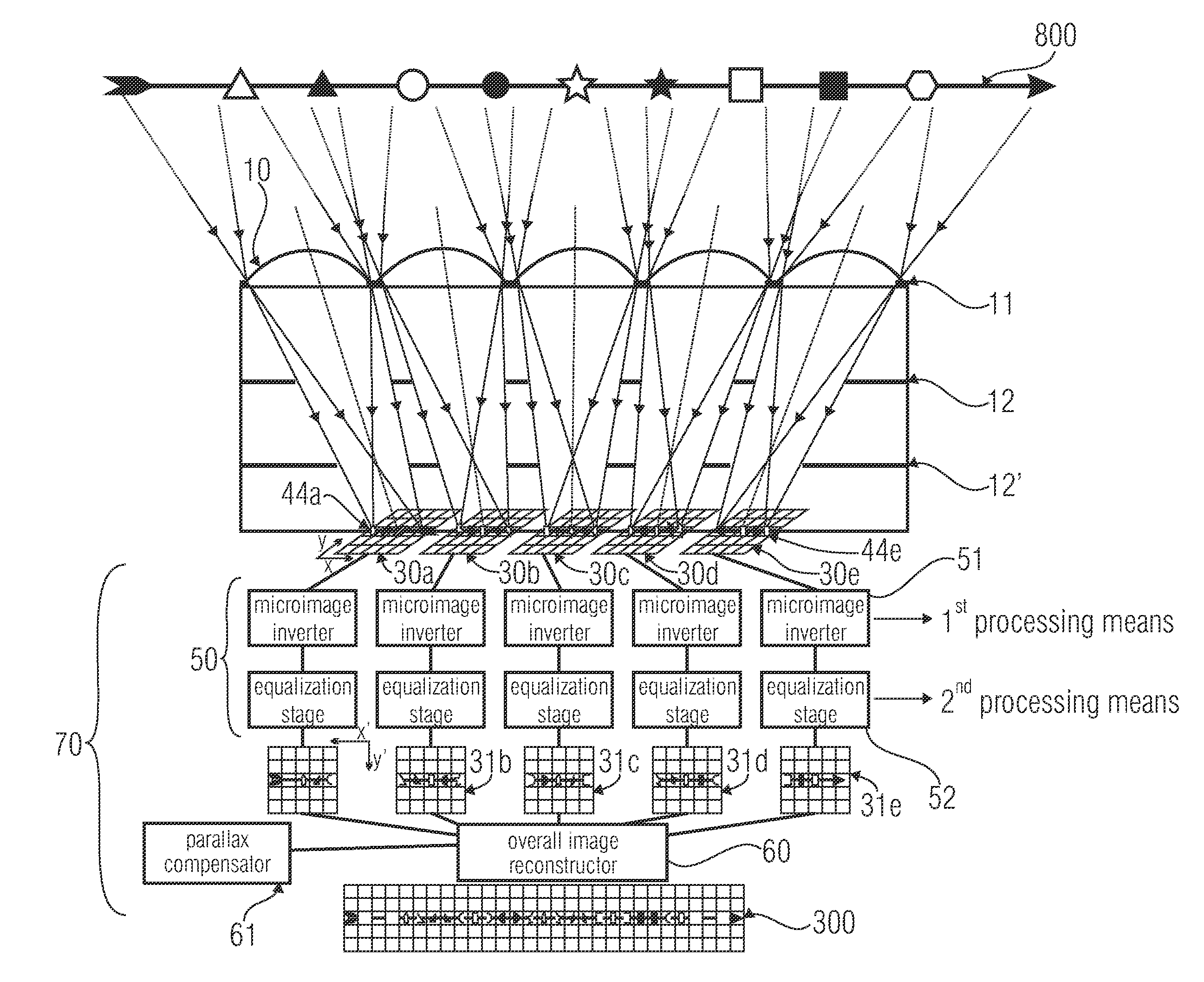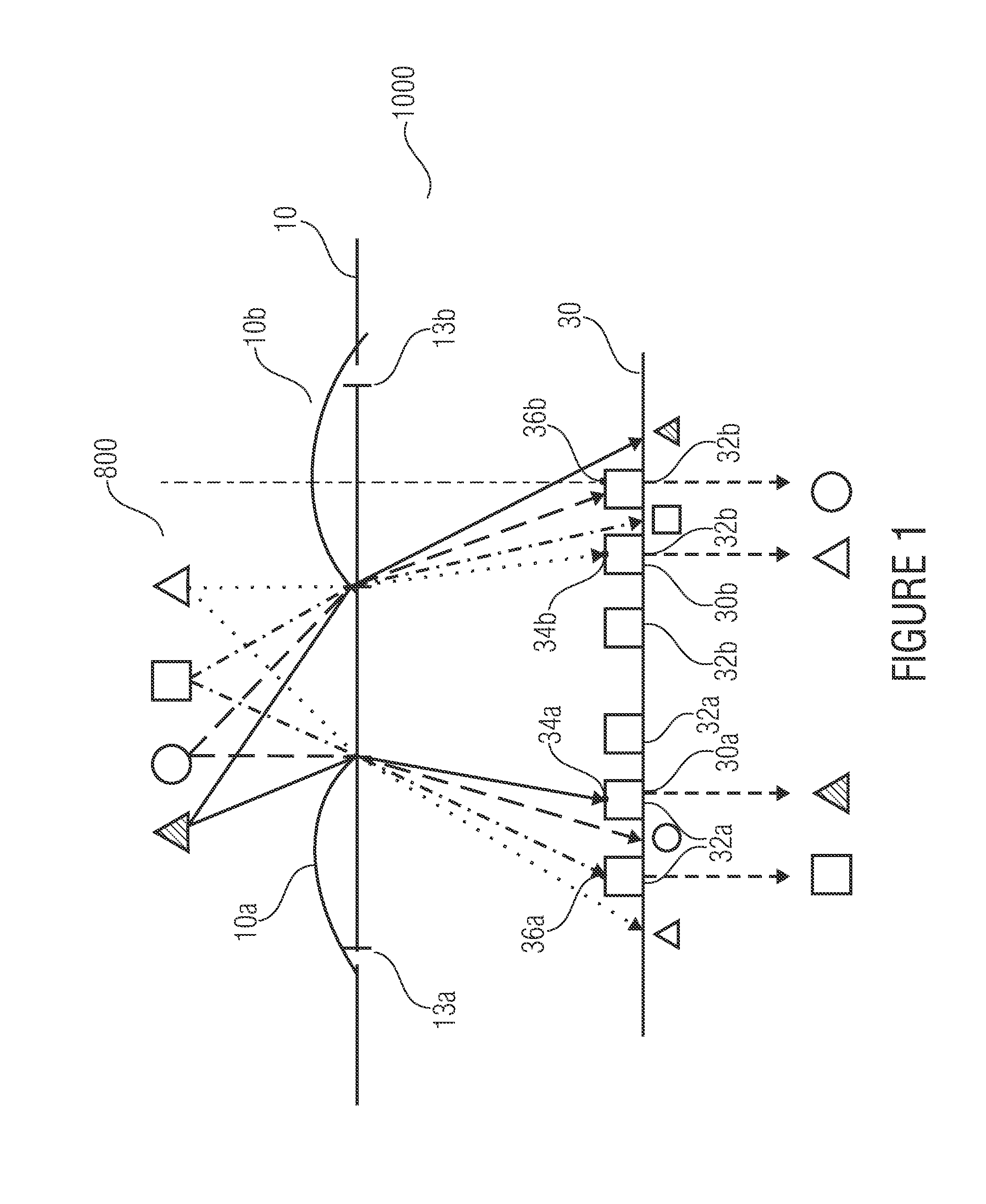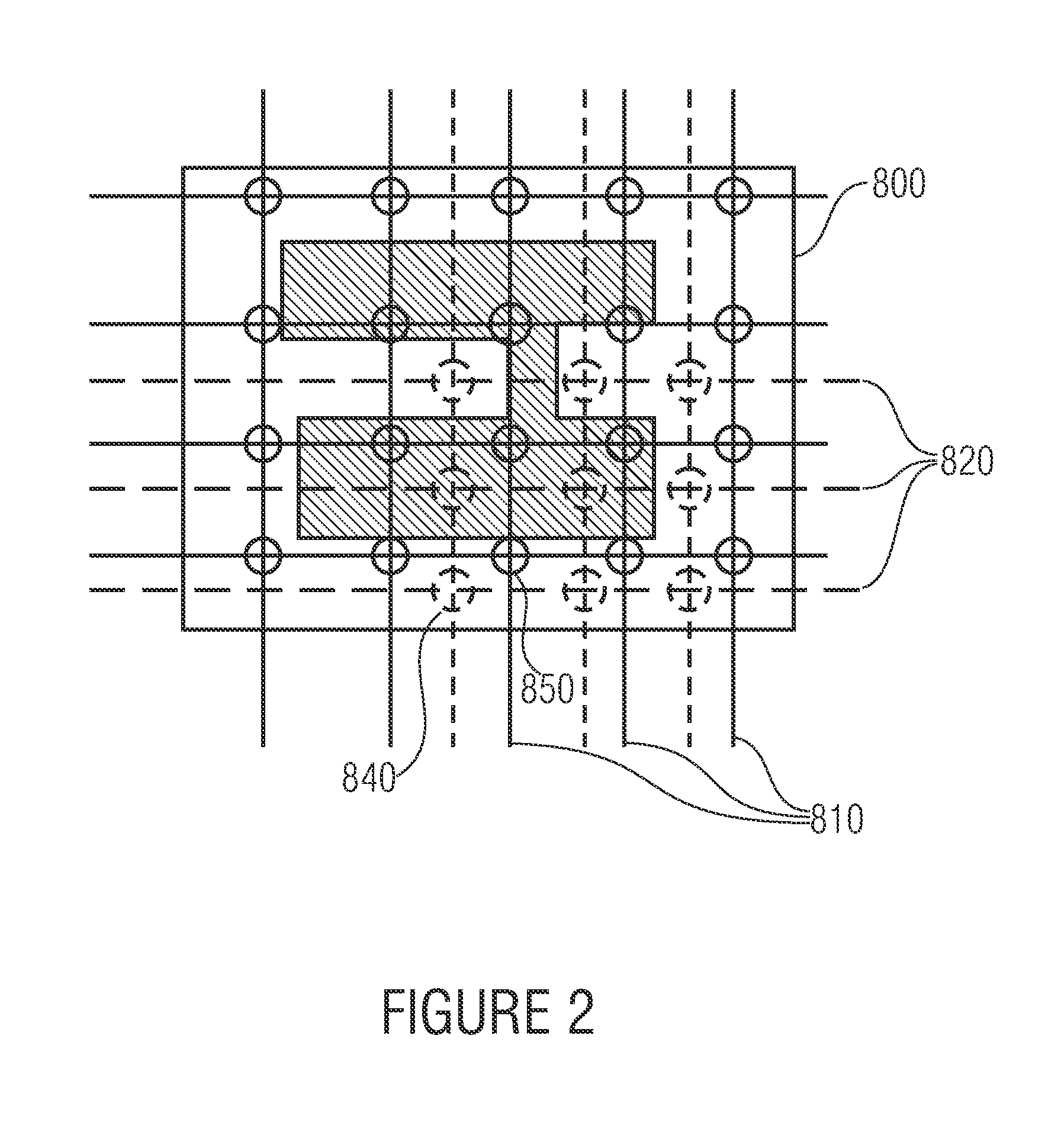Device, image processing device and method for optical imaging
a technology of optical imaging and image processing, applied in the field of optical imaging devices, image processing devices and methods, can solve the problems of limiting further, reducing the capability of current manufacturing technologies, and reducing so as to reduce the building length of imaging devices, short focal length of each individual channel, and high image resolution capability
- Summary
- Abstract
- Description
- Claims
- Application Information
AI Technical Summary
Benefits of technology
Problems solved by technology
Method used
Image
Examples
first embodiment
[0046]FIG. 1 shows a schematical illustration of an optical imaging device 1000 according to the present invention. The optical imaging device 1000 includes a micro lens field 10 with a first micro lens 10a and a second micro lens 10b. An image sensor 30 is located below the micro lens field 10. This image sensor 30 includes a first image detector matrix 30a and a second image detector matrix 30b. Each of the two image detector matrices 30a and 30b includes a plurality, for example, of three image detectors 32a, 32b. The first micro lens 10a is associated with the first image detector matrix 30a and forms a first optical channel with the same, the second micro lens 10b is associated with the second image detector matrix 30b and forms a second optical channel with the same. The centers 34a and 34b of the image detector matrices 30a and 30b are offset laterally with respect to the centroids, projected onto the image detector matrices 30a and 30b, of the micro lens apertures 13a and 13...
case 1
[0060]In case 1, the sampling grids of two neighboring channels each are shifted with respect to each other by half of the sampling interval dA of an individual channel (shift: dV). The shift dV of the sampling grid of one of the channels of the considered pair to the respectively next channel of a neighboring pair is a non-integer multiple of the sampling interval in the single channel (for example (N−1 / 2)×dA, wherein N is an integer number). This case is relevant for a small number of optical channels (e.g. 2×2 channels) or also for smaller object distances (smaller than 50× focal length), to guarantee a gapless equidistant sampling of the object field. In other words, a shifting by an odd multiple of half of the sampling interval of a single channel takes place.
case 2
[0061]Case 2 shows a shift dV of the optical channels or the centers of the photo detector matrices of the optical channels by half of the overall sum of all sampling intervals (N×dA) within a channel or by half of the product of the number (N) of the photodiodes and the sampling interval (dA) of an optical channel (for example N×dA / 2), with at the same time an odd number of photodiodes or sampling areas per channel (N). This case is relevant for a larger number of channels to halve the sampling period in the cooperation of neighboring channels and here to obtain neither sampling gaps nor multi-sampling. This characteristic has several advantages. A first advantage is that a shortening (e.g. halving) of the building length (even for the multi-channel system) is enabled with a constant angular sampling. This means that the angular distance, projected retrally by the optics, between two neighboring image pixels of the overall image is maintained. This applies when the same f-stop (F / #...
PUM
 Login to View More
Login to View More Abstract
Description
Claims
Application Information
 Login to View More
Login to View More - R&D
- Intellectual Property
- Life Sciences
- Materials
- Tech Scout
- Unparalleled Data Quality
- Higher Quality Content
- 60% Fewer Hallucinations
Browse by: Latest US Patents, China's latest patents, Technical Efficacy Thesaurus, Application Domain, Technology Topic, Popular Technical Reports.
© 2025 PatSnap. All rights reserved.Legal|Privacy policy|Modern Slavery Act Transparency Statement|Sitemap|About US| Contact US: help@patsnap.com



